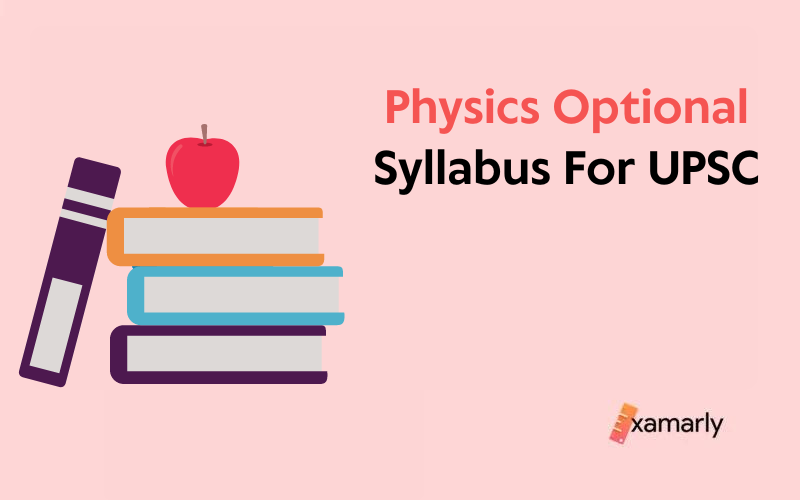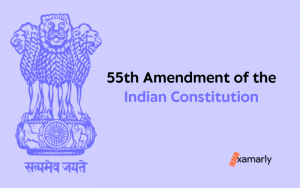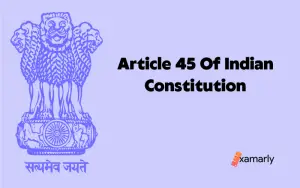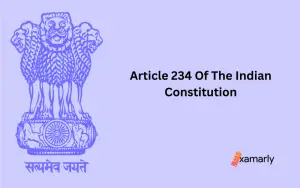Physics is a highly specialized topic. The Physics Optional Syllabus for UPSC is appropriate for students who have studied it at the graduate level. If you are considering to opt UPSC Physics Optional Syllabus, there are some things you should know about it.
Read this article to figure out the UPSC Optional Physics Syllabus. Also, acknowledge some of its benefits and drawbacks, what books you should refer to cover this syllabus, how to cover the syllabus, and many more related queries regarding the Physics Optional Syllabus of the IAS Exam.
Physics Optional Syllabus For UPSC Exam
Physics Optional UPSC Syllabus Of Paper I
1. (a) Mechanics of Particles:
Laws of motion; conservation of energy and momentum, applications to rotating frames, centripetal and Coriolis accelerations; Motion under a central force; Conservation of angular momentum, Kepler’s laws; Fields and potentials; Gravitational field and potential due to spherical bodies, Gauss and Poisson equations, gravitational self-energy; Two-body problem; Reduced mass; Rutherford scattering; Centre of mass and laboratory reference frames.
(b) Mechanics of Rigid Bodies:
System of particles; Centre of mass, angular momentum, equations of motion; Conservation theorems for energy, momentum, and angular momentum; Elastic and inelastic collisions; Rigid body; Degrees of freedom, Euler’s theorem, angular velocity, angular momentum, moments of inertia, theorems of parallel and perpendicular axes, equation of motion for rotation; Molecular rotations (as rigid bodies); Di and tri-atomic molecules; Processional motion; top, gyroscope.
(c) Mechanics of Continuous Media:
Elasticity, Hooke’s law and elastic constants of isotropic solids and their inter-relation; Streamline (Laminar) flow, viscosity, Poiseuille’s equation, Bernoulli’s equation, Stokes’ law and applications.
(d) Special Relativity:
Michelson-Morley experiment and its implications; Lorentz transformations-length contraction, time dilation, the addition of relativistic velocities, aberration and Doppler effect, mass-energy relation, simple applications to a decay process; Four-dimensional momentum vector; Covariance of equations of physics.
2. Waves and Optics:
(a) Waves:
Simple harmonic motion, damped oscillation, forced oscillation, and resonance; Beats; Stationary waves in a string; Pulses and wave packets; Phase and group velocities; Reflection and Refraction from Huygens’ principle.
(b) Geometrical Optics:
Laws of reflection and refraction from Fermat’s principle; Matrix method in paraxial optics-thin lens formula, nodal planes, system of two thin lenses, chromatic and spherical aberrations.
(c) Interference:
Interference of light-Young’s experiment, Newton’s rings, interference by thin films, Michelson interferometer; Multiple beam interference, and Fabry-Perot interferometer.
(d) Diffraction:
Fraunhofer diffraction-single slit, double slit, diffraction grating, resolving power; Diffraction by a circular aperture and the Airy pattern; Fresnel diffraction: half-period zones and zone plates, circular aperture.
(e) Polarization and Modern Optics:
Production and detection of linearly and circularly polarized light; Double refraction, quarter wave plate; Optical activity; Principles of fiber optics, attenuation; Pulse dispersion in step index and parabolic index fibers; Material dispersion, single mode fibers; Lasers-Einstein A and B coefficients; Ruby and He-Ne lasers; Characteristics of laser light-spatial and temporal coherence; Focusing of laser beams; Three-level scheme for laser operation; Holography and simple applications.
3. Electricity and Magnetism:
(a) Electrostatics and Magnetostatics:
Laplace and Poisson equations in electrostatics and their applications; Energy of a system of charges, multiple expansion of scalar potential; Method of images and its applications; Potential and field due to a dipole, force and torque on a dipole in an external field; Dielectrics, polarization; Solutions to boundary-value problems-conducting and dielectric spheres in a uniform electric field; Magnetic shell, uniformly magnetized sphere; Ferromagnetic materials, hysteresis, energy loss.
(b) Current Electricity:
Kirchhoff’s laws and their applications; Biot-Savart law, Ampere’s law, Faraday’s law, Lenz’s law; Self-and mutual-inductances; Mean and r m s values in AC circuits; DC and AC circuits with R, L, and C components; Series and parallel resonances; Quality factor; Principle of the transformer.
4. Electromagnetic Waves and Blackbody Radiation:
Displacement current and Maxwell’s equations; Wave equations in vacuum, Pointing theorem; Vector and scalar potentials; Electromagnetic field tensor, the covariance of Maxwell’s equations; Wave equations in isotropic dielectrics, reflection and refraction at the boundary of two dielectrics; Fresnel’s relations; Total internal reflection; Normal and anomalous dispersion; Rayleigh scattering; Black body radiation and Planck’s radiation law, Stefan – Boltzmann law, Wien’s displacement law, and Rayleigh-Jeans’ law.
5. Thermal and Statistical Physics:
(a) Thermodynamics:
Laws of thermodynamics, reversible and irreversible processes, entropy; Isothermal, adiabatic, isobaric, isochoric processes and entropy changes; Otto and Diesel engines, Gibbs’ phase rule and chemical potential; van der Waals equation of state of a real gas, critical constants; Maxwell-Boltzman distribution of molecular velocities, transport phenomena, equipartition, and virial theorems; Dulong-Pet it, Einstein, and Debye’s theories of specific heat of solids; Maxwell relations and applications; Clausius- Clapeyron equation; Adiabatic de-magnetization, Joule-Kelvin effect and liquefaction of gases.
(b) Statistical Physics:
Macro and micro states, statistical distributions, Maxwell-Boltzmann, Bose-Einstein, and Fermi-Dirac distributions, applications to the specific heat of gases and black body radiation; Concept of negative temperatures.
Physics Optional UPSC Syllabus Of PAPER-II
1. Quantum Mechanics:
Wave-particle duality; Schroedinger equation and expectation values; Uncertainty principle; Solutions of the one-dimensional Schroedinger equation for a free particle (Gaussian wave-packet), particle in a box, particle in a finite well, linear harmonic oscillator; Reflection and transmission by a step potential and by a rectangular barrier; Particle in a three-dimensional box, the density of states, free electron theory of metals; Angular momentum; Hydrogen atom; Spin half particles, properties of Pauli spin matrices.
2. Atomic and Molecular Physics:
Stern-Gerlach experiment, electron spin, the fine structure of hydrogen atom; L-S coupling, J-J coupling; Spectroscopic notation of atomic states; Zeeman effect; Frank Condon principle and applications; Elementary theory of rotational, vibrational and electronic spectra of diatomic molecules; Raman effect and molecular structure; Laser Raman spectroscopy; Importance of neutral hydrogen atom, molecular hydrogen and molecular hydrogen ion in astronomy; Fluorescence and Phosphorescence; Elementary theory and applications of NMR and EPR; Elementary ideas about Lamb shift and its significance.
3. Nuclear and Particle Physics:
Basic nuclear properties-size, binding energy, angular momentum, parity, magnetic moment; Semi-empirical mass formula and applications, mass parabolas; Ground state of deuteron, magnetic moment and non-central forces; Meson theory of nuclear forces; Salient features of nuclear forces; Shell model of the nucleus – successes and limitations; Violation of parity in beta decay; Gamma decay and internal conversion; Elementary ideas about Mossbauer spectroscopy; Q-value of nuclear reactions; Nuclear fission and fusion, energy production in stars; Nuclear reactors.
Classification of elementary particles and their interactions; Conservation laws; Quark structure of hadrons; Field quanta of electroweak and strong interactions; Elementary ideas about unification of forces; Physics of neutrinos.
4. Solid State Physics, Devices, and Electronics:
The crystalline and amorphous structure of matter; Different crystal systems, space groups; Methods of determination of crystal structure; X-ray diffraction, scanning, and transmission electron microcopies; Band theory of solids – conductors, insulators and semiconductors; Thermal properties of solids, specific heat, Debye theory; Magnetism: para and ferromagnetism; Elements of superconductivity, Meissner effect, Josephson junctions, and applications; Elementary ideas about high-temperature superconductivity.
Intrinsic and extrinsic semiconductors; p-p and n-p-n transistors; Amplifiers and oscillators; Op-amps; FET, JFET, and MOSFET; Digital electronics-Boolean identities, De Morgan’s laws, logic gates, and truth tables; Simple logic circuits; Thermostats, solar cells; Fundamentals of microprocessors and digital computers.
Pros and Cons of Physics UPSC Optional Syllabus
We have included the advantages and disadvantages of the UPSC Physics Syllabus below to help you decide if choosing physics as your optional subject is the right choice for you. You may use it to aid in decision-making.
Pros Of UPSC Physics Optional Syllabus
- There is no room for interpretation because this is a scientific and logical topic. Nothing is subjective, therefore if you correctly compose your response, you should receive credit.
- It is a subject that can be scored because diagrams and visual representations can earn you points. There are also numerical questions here that, if answered correctly, would get you the highest marks.
- If you have a strong foundation in this topic, you should choose this option since you can improve your final UPSC exam score by doing well in the two optional papers.
- Although there is little overlap, having a physics background can help you produce excellent answers on several science and technology issues.
- Compared to courses like geography and public administration, there is a lot less competition.
- The most amazing thing about this option is that, unlike in the humanities topics, you can predict how well you did on the papers.
- You may easily answer 80% of the questions on the test if you go over the full syllabus.
- The UPSC Exam Pattern is generally established, and the physics optional syllabus is basically static.
Cons of UPSC Physics Optional Syllabus
- There is very little overlap with GS articles.
- To write effective responses on this topic, intellectual clarity at the highest level is required. In addition, mastering numerals requires a thorough knowledge of the theory underlying them as well as lots of practice.
- As it is a fundamental science subject, you must provide exact answers. You cannot avoid the subject in any response and expect to receive a passing grade.
- This option requires extensive modification. If you want to be able to perform well, you must practice and revise every day.
- Only candidates with backgrounds in engineering or physics are eligible to take this optional.
How to Cover UPSC Physics Syllabus for IAS Exam?
Absolute clarity in concepts is required in physics, and a strong numerical foundation would be very beneficial. Given that it is a rational subject, it might require more focus than other subjects do.
- It is necessary to write down the syllabus and keep track of the topics that have been completed and those that remain.
- Having a detailed schedule would be very helpful. The schedule aids in time distribution, which ultimately aids in a more thorough discussion of the subjects.
- Candidates must carefully determine which topics they must cover before beginning their preparation. The syllabus covers a variety of subjects. The candidates must know how to schedule their studies and carefully prepare for them.
- Solving questions from prior years’ exams, taking practice exams, and taking the UPSC Civil Services test series are additional essentials.
- Reference books are essential. Therefore, the aspirants should stick to a select handful of the top literature; this aids in comprehension and learning effectiveness.
- Candidates must keep a record of their test-series mistakes, analyze their weak points, and then rectify them.
Books To Cover Physics Optional UPSC Syllabus
The Union Public Service Commission has officially announced the UPSC Physics Syllabus. This subject is one of the optional subjects that can be selected for the Civil Services Examination. It is a demanding subject that requires logical reasoning skills. A good grasp of mechanics, quantum physics, thermal and statistical physics, and optics is essential for this subject.
Various reference books are available in the market, including those specially designed for the UPSC Exam. Reference books give quick access to important factual information and statistical data. They also contain references to other sources of information. You can also refer to dictionaries, encyclopedias, and almanacs.
NCERT textbooks are also helpful. NCERT books cover all essential topics in an easy-to-understand manner and can be used as a guideline to learn the concepts in the UPSC exam.
Read the linked article to learn about How To Read NCERT For UPSC Preparation?
Books For Paper 1 Of Physics UPSC Optional Syllabus
- Any fundamental book on electrical engineering like B.L Theraja (Vol 1) or Vincent Del Toro
- Optics – Brijlal & Subramanyam, B.S. Agarwal, Ajoy & Ghatak
- Properties of Matter – B. Aggarwal
- Electricity & Magnetism: D.C. Tayal, B.S. Agarwal, Griffith
- Physics Vol I&II by David Halliday and Resnick
- Introduction of Electrodynamics – David Griffiths
- EM Theory -Chopra & Agarwal/Satya Prakash
- A Textbook of Sound – Khanna & Bedi
- Special Relativity-R.Resnick -Gupta & Goyal
Books For Paper 2 Of Physics UPSC Optional Syllabus
- Quantum Mechanics -Ghatak & Lokanathan
- Atomic Physics – J. B. Rajan
- Statistical Physics -B.B laud
- Thermal Physics – P.K Chakraborty – Satya Prakash, Singhal & Agarwal
- Thermal Physics – Singal, Agarwal & Prakash, B.S. Agarwal, Shah & Srivastava
- University Physics – Zemansky
- Fundamental of Magnetism electricity – D.N. Vasudeva
- Mechanics – D.S. Mathur, B.S. Agarwal
- Mechanics – Kleppner & Kolenkow -D.S. Mathur
- Nuclear Physics – D.C. Tayal
- Nuclear Physics -S.B Patel Optics-Ajoy Ghatak-B.S. Agarwal
- Quantum Mechanics – A Ghatak
- Waves and Oscillations – Brijlal & Subramanyam, B.S. Agarwal
- Electronics – Millman & Halkias, S. Ramnam, Ryder or Bolstead, Malvina
- Modern Physics – A Beiser (Concepts of modern physics), S.L. Gupta, B.S. Agarwal, J.B. Rajan
- Quantum Physics- Resnick & Eisberg
Conclusion
Physics Optional Syllabus for UPSC is a great option for those who have an interest in the subject. The IAS requires a high level of expertise in physics, therefore training should begin early. For practice, candidates should answer questions from UPSC question banks from prior years as well as take part in mock exams. They may succeed in the UPSC exam and earn high marks if they did this.
Although the physics UPSC optional syllabus is extensive, aspirants can focus on a few topics at once. It will be simpler to answer the UPSC Physics optional question paper if you break up the lesson plan into sections and start by going over the fundamental ideas. Aspirants have at least two hours every day for eight to ten months to plan for this subject. This will enable candidates to completely cover the entire course.
FAQs
How Can UPSC Optional Physics Syllabus Be Completed In 6 Months?
If you want to score well in the UPSC Physics exam, you need to prepare thoroughly. It is not enough to know the concepts and formulas; you must have a deeper understanding of the topics. It is also important to have a higher level of problem-solving skills. You should be familiar with derivations since they are a key part of answers.
In the UPSC Physics syllabus, you will be required to study topics like Mechanics of Particles, Waves and Optics, Quantum Mechanics, and Atomic and Molecular Physics. Regardless of your background, you must be able to answer questions with logic and analysis.
How To Crack The Optional Physics Examination?
The key to cracking competitive exams is meticulous planning. You’ll need to prepare for the two 250-mark papers with a total mark of 500.
First, make sure to understand the syllabus. Moreover, it’s important to know the pattern. Then, you can chalk out a plan to study effectively. The syllabus and examination pattern will help you filter out important information and make sure that your strategy aligns with the entire process of the examination.
Secondly, it’s crucial to develop answer-writing skills. There’s limited space for writing answers, so it’s essential to write neatly and legibly. It’s also important to avoid illegible work. This will give you confidence and earn goodwill from the evaluators.
Does The Science Syllabus For UPSC Mains And The Physics Optional Syllabus For UPSC Have Any Similarities?
Technology and science are included in the UPSC CSE Mains syllabus, although there isn’t much of the physics UPSC optional syllabus that is covered in the IAS mains syllabus.






